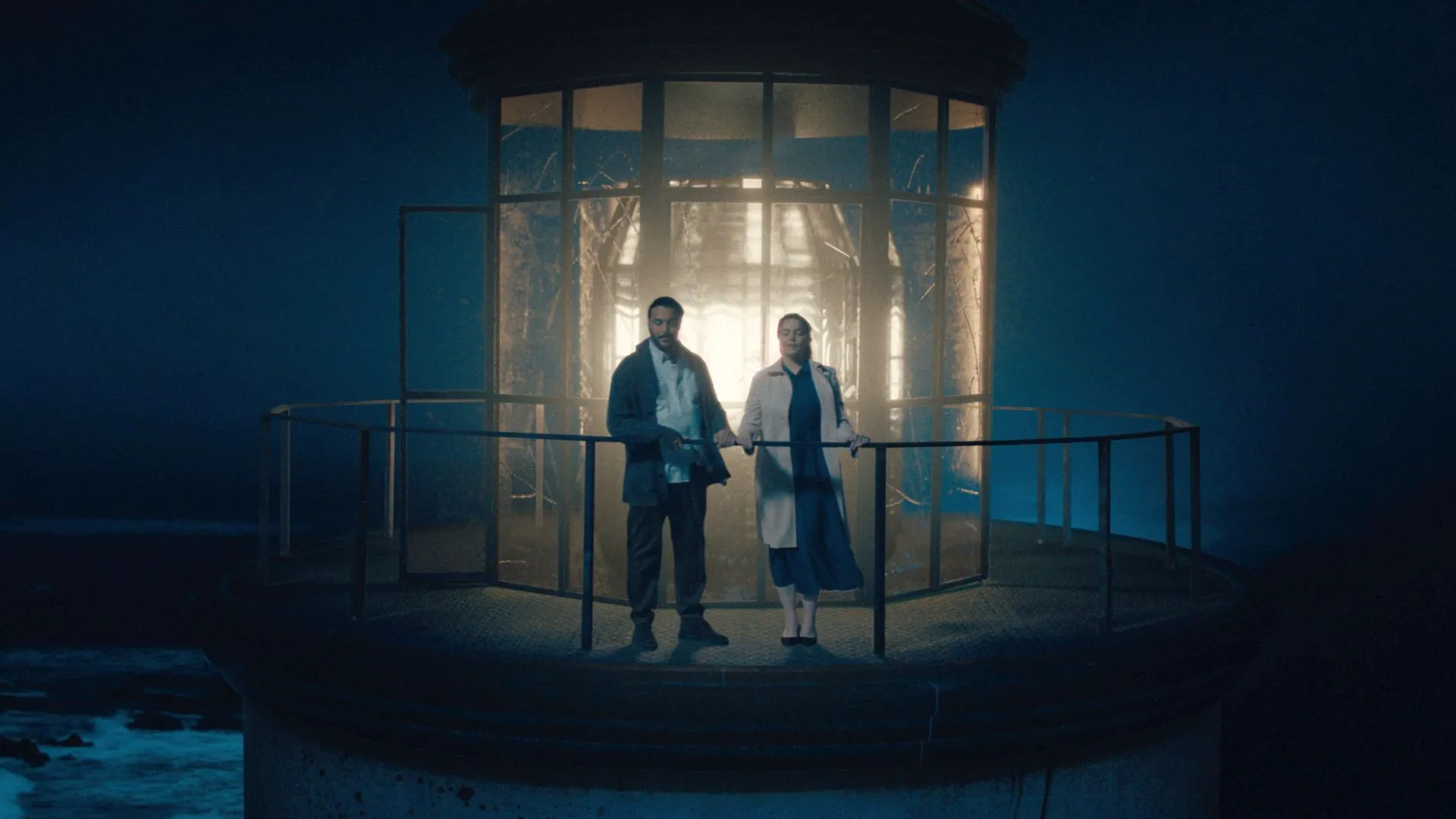The grammar of cinematic tragedy often follows familiar rules, but I’m Beginning to See the Light opens with a dissonant chord. We meet Ezra Cooper, a trumpeter pouring his soul into American jazz, a musical form born from cultural collision.
The scene is intimate, a classic portrait of the artist whose dedication creates a low hum of tension with his family life. Director Konstantin Khudyakov, with his Russian cinematic heritage, presents this American archetype—the struggling musician—with a detached empathy. The story’s inciting event is not a simple twist of fate; it is a brutal piece of symbolism.
The family car is struck and obliterated by a Fresnel lens, a marvel of European optical engineering designed to cast light, here becoming an agent of absolute darkness. The film immediately poses its central inquiry: how does one navigate a world where the very symbols of guidance become the instruments of ruin?
The Lighthouse as Liminal Space
Following the disaster, Ezra’s movement is not a conscious decision but a somnambulistic drift. Wounded and hollowed, he finds himself at the lighthouse, the destination of the lens that destroyed his life. He cannot face his home, a familiar narrative beat, but his choice of sanctuary is anything but typical.
The structure he inhabits is a powerful liminal space, a concept explored deeply in both Russian literature and interactive game design. It is simultaneously a beacon of salvation and a morbid focal point for suicide—a ‘hub world’ where the protagonist is caught between memory and oblivion.
By a series of strange chances, Ezra is mistaken for the keeper, passively accepting a new identity and function. Khudyakov’s camera captures this internal state through a distinctly expressionistic visual language. The interplay of deep shadow and piercing light within the tower externalizes Ezra’s psychological state.
His act of blocking a window with old record album covers is not just a man seeking darkness; it is a visual metaphor for silencing the past, an attempt to control the relentless intrusion of a world he no longer belongs to. This symbolic space forces a shift; his solitary grief is interrupted by the grief of others, transforming his passive existence into a required action.
A Typology of Human Despair
Jack Huston’s performance as Ezra is a study in physical containment, portraying a man so broken he barely registers his own presence. His stillness is the vacuum into which other characters are drawn, each representing a different facet of human suffering.
These encounters feel less like organic social interactions and more like the carefully curated character engagements of a role-playing game, each serving a specific narrative function. Sam (Brandon T. Jackson) appears as the first lost soul Ezra must guide back from the ledge.
As fellow musicians, their connection is forged in a shared language, his lively energy a stark counterpoint to Ezra’s quietude. Hannah (Abbie Cornish), the teacher from his last audience, embodies a fragile link to a life before the fall.
Their developing bond is built not on romantic convention but on the quiet recognition of shared wounds. This slow, tentative movement toward connection is violently interrupted by the appearance of an escaped convict (Mark Boone Junior). He brings a manic, aggressive despair into the sanctuary, his raw monologue on humanity’s nature serving as a chaotic test of Ezra’s newfound, fragile purpose.
A Coda of Ambiguity
The film rejects the clear-cut three-act structure of a Hollywood redemption story. Its narrative logic operates more like a jazz composition—a mournful, exploratory melody that wanders through themes of loss before returning, changed, to its core motif.
Khudyakov prioritizes emotional texture and intimate character moments over plot mechanics, resulting in a slow, meditative pacing that may feel alien to audiences accustomed to more direct storytelling. This approach culminates in a final act that reframes everything that came before.
Without revealing the specifics, the ending challenges the viewer’s perception of the film’s reality. It blurs the line between literal events and the complex, allegorical landscape of a mind fractured by trauma.
The film becomes a profound and unsettling examination of how a person might construct a new reality to survive an impossible truth, suggesting the path toward light requires a journey through a darkness so complete that it bends the very nature of the world itself.
I’m Beginning to See the Light premiered in a limited theatrical release on May 2, 2025, distributed by Gravitas Ventures . Clocking in at approximately 1h 40m, it’s now available to rent or buy digitally—including platforms like Apple TV and Fandango at Home—and a DVD was released on May 6, 2025.
Full Credits
Director: Konstantin Khudyakov
Writers: Konstantin Khudyakov, Mark Bacci
Producers and Executive Producers: Pavel Hoodyakov, Mark Bacci, Cassian Elwes
Cast: Jack Huston, Abbie Cornish, Brandon T. Jackson, Jamie Chung, Lucy Punch, Mark Boone Junior
Director of Photography (Cinematographer): Maz Makhani
Editors: Konstantin Kochubey
Composer: Walter Afanasieff
The Review
I'm Beginning to See the Light
I'm Beginning to See the Light operates as a powerful, if challenging, cinematic meditation. It trades narrative clarity for a deep, symbolic exploration of grief, anchored by a masterful central performance and stunning visual language. A thoughtful fusion of Russian existential sensibilities and American archetypes, the film is a demanding, dreamlike experience that rewards patient viewers with its profound emotional and intellectual depth. Its ambiguous nature is not a flaw but its defining feature, making it a piece to be contemplated long after the credits roll.
PROS
- A compelling and layered central metaphor.
- A powerful, physically expressive lead performance from Jack Huston.
- Artful cinematography that masterfully visualizes internal conflict.
- An unconventional, thought-provoking narrative structure.
CONS
- The deliberate, slow pacing could be alienating for some audiences.
- Its heavy reliance on symbolism may feel overt at times.
- The ambiguous conclusion might leave viewers desiring a more concrete resolution.
